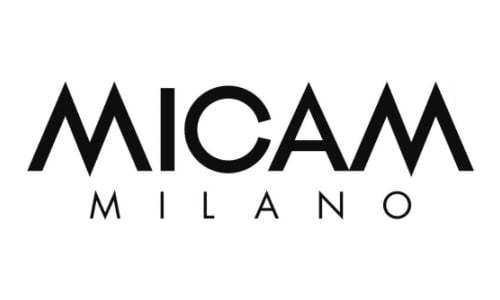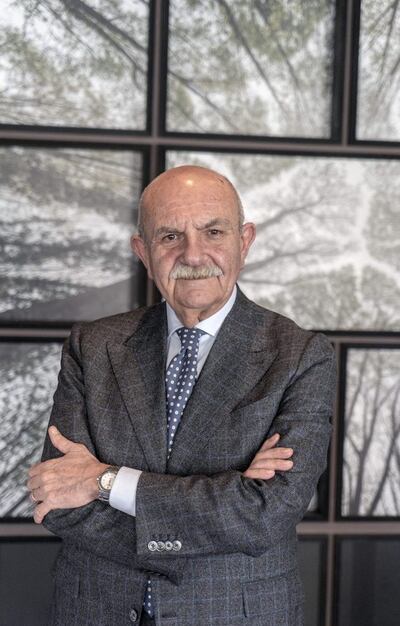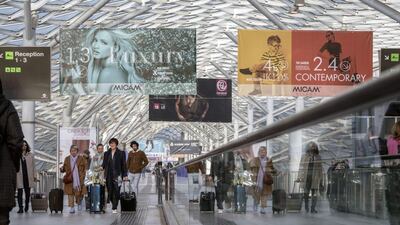
The Business of Fashion
Agenda-setting intelligence, analysis and advice for the global fashion community.

Agenda-setting intelligence, analysis and advice for the global fashion community.


MILAN, Italy — The global footwear market continues to grow. BoF and McKinsey & Co.’s State of Fashion 2020 Report estimates a year-on-year growth rate of between 2.3 and 3.5 percent within the footwear industry in 2020, buoyed by the Asia Pacific region.
Ahead of Milan Fashion Week, Micam held its 89th edition, welcoming over 1,200 exhibitors, with nearly half coming from outside Italy, to the Fiera Milano exhibition space, hosting talks from the likes of WGSN and Lineapelle on subjects ranging from digitalisation and the future of retail to sustainability and responsible materials.
“A different [consumer] mindset is making its impact felt,” says Siro Badon, the newly appointed president of Micam, Europe’s largest and oldest footwear trade show. “I hope that this different mentality is the fuel that will make it possible to create a new [type of] market.”

Siro Badon, President of Micam | Source: Courtesy
However, the footwear market is feeling the weight of political and economic impact of the China-US trade war, which caused Chinese imports to America to drop from 90 percent of footwear to just 68 percent in 2019. “I have no crystal ball, but globalisation can create a lot of problems — including the effects of the coronavirus, for example. But [it also] opens up a lot of opportunities. The world is more and more multicultural, I hope that we will be able to adjust to these changes,” says Badon, who announced on Monday the union of Micam and Informa’s footwear marketplace Magic, to create Micam America in Las Vegas later this year.
From new international markets to increasing competition from sportswear giants, and the evolution of consumer sentiments towards the Made in Italy assignation and the value of artisanal craftsmanship relative to brand names, BoF sat down with four of the fair’s exhibitors to hear what growth levers they are investing in and what risks they are actively mitigating as wholesale-orientated businesses.
Ken Ohashi, President of International and Global Retail at Authentic Brands Group
The brand management company owns a global portfolio of 50 brands, including Juicy Couture, Forever 21 and Nine West, which it purchased in 2018. ABG is the third largest brand management and licensing company in the world, producing $10 billion at retail.
What international market opportunities are you focused on?
China is a market we really need to penetrate as we move forward. Our second [largest] market [opportunity] is Russia and the third is Brazil, where the market is very robust. Entering that market is complicated, but we know the brand resonates with the consumer in Brazil.
We want to make sure that the model works so consumers are really getting the value proposition globally. We have partners trading everywhere, from the Middle East to Asia to Latin America, and all across Europe. Our customer in Italy has a very different sensibility to our customer in Latin America, for example. So we want to make sure we have our bases covered in terms of who the consumer is globally.
We also want to ensure we are able to get the best partners, who have control of their marketing and market specific e-commerce site for their markets, so there’s a lot of customisation that happens on the ground. It is important we translate global campaigns into local pushes that are relevant to the consumer.
What challenges are you currently facing in the market?
Right now, what's happening is the trends are moving so quickly that that lead time to adapt to trends is getting shorter and shorter. The [Nine West manufacturer] Marc Fisher works on a very tight timeline, and he won't lock production in until the last minute to make sure we've captured every single trend that's out there.
But I think the greatest challenges that we're facing are also opportunities. One is really transitioning the dress business into a casual business and then making sure that we have our bases covered worldwide in styles, which means getting more efficient with the supply chain overall, because we’re going to have to produce more styles to cover the world.
The biggest thing for us is just getting the supply chain right. To import the goods to Brazil, for example, costs a lot of money so we’re constantly thinking about what the right price point is to the consumer and making sure that we index appropriately to the US and in order to do that, we may have to work with factories in Brazil directly or think about other ways to make sure that the supply chain really supports pricing in the market. We want best-in-class partners across the world and that takes time and due diligence.
How is your product offering evolving to meet consumer demands?
We are transitioning the business from a dress casual business because, overall, a woman today has every single type of silhouette in her closet in terms of footwear. At Nine West, our big push this year, working with Marc Fisher as our partner in design, development and manufacturing, is that we really push into this casual footwear component and evolve the brand. Then the question is, how do we continue to diversify the business where that fashion-forward piece of the business is relevant? There’s a lof of customisation that’s happening globally and casual is becoming a much larger part of the business in terms of sneakers and the casual workplace overall.
In the US, we’ve been able to penetrate multiple categories and we’re looking to do that across the world as well, looking at how we augment that footwear part of the business and implement Nine West in other categories and classifications.
Alberto Franceschi, Co-Founder of Hide and Jack
The Made in Italy sneaker brand was founded in 2014 by brothers Alberto and Nicola Franceschi. Hide and Jack is owned by the Grafica Veneta Group and has over 250 stores globally, with an exclusive line at Farfetch.
What challenges are you currently facing in the market?
It is very difficult to help people understand Made in Italy. If I go to China to manufacture our designs, I could pay €12 ($12.70) [a sneaker]. I pay seven times, eight times that for Made in Italy because the quality is better. Our sneakers are made for comfort. The lining of the sneakers is made like a sock — it's an old technique and it’s very expensive, so [other] brands in Italy started to remove this.
Anyone can start a brand but if you are stocked by a retailer, they are saying they believe in your product and business.
In my mind, here and all over Europe, the Made in Italy label is struggling. Consumers now just think about the brand name. When you're in a store with Gucci and Off-white, for example, it's very hard to compete with them — one of our last clients expected that we could operate on the same level as these big brands, but they have super high budgets for everything.
But, still, two years after we launched, Grafica Veneta Group bought our brand and our revenue is around €150 million. We are working with a former executive from Prada and a sales manager of Armani, so we have people with great experience.
What international market opportunities are you focused on?
I strongly believe that global platforms like Farfetch are the future. They take care of their brands and are easy to work with. Today, anyone can start a brand and sell it online but if you are stocked by a retailer — whether online or in a physical store — it is like a label. [That store is] saying they believe in your product and business.
In terms of geographies, I'm taking my time with the United States because that is where the sneaker was born. I need to take my time to find the best way to put my shoes in stores and be sure that the sneakers go to the right client. The first market that believed in us was Russia. The department store TsUM, which is part of DLT, stocked our line. After that, I started to receive requests from other markets and we are now also selling in countries including Japan, Greece, South Africa, Germany, France and China — although, like everyone else, we are having some difficulties because of the coronavirus.

Micam entrance hall in Fiera Milano | Source: Courtesy
How is your product offering evolving to meet consumer demands?
In some of our products in the new season, we used recycled materials because markets like Japan and Scandinavia care about these elements. For another design, we made a strap that is removable so you can match the details of your sneakers to your watch or belt, for example — to customise it to your wardrobe.
I want to extend the product [range], to do something more than sneakers because people want a story. I would like to create a Hide & Jack lifestyle. This is what teenagers and the fashion industry are looking for now.
Norman Villa, Showroom Owner
Launched in 1992, the multi-brand showroom Percorsi Obbligati represents established luxury Italian brand Alberto Fasciani among other luxury start-ups.
What challenges are you currently facing in the market?
The retail market is not like it was 20 years ago — even 10 years ago. Budgets are always smaller and buyers have less time because they have a smaller budget for traveling. Now, it's quite troublesome to get an appointment because buyers have so many requests and limited time. At the tradeshow, they can just drop in and it makes your life a bit easier.
We are seeing instability in the market at the moment, particularly in the Middle East and Lebanon, and between the US and China, which is a headache. From a distribution point, we're just entering the market in China so it’s not affecting us too much. But in the coming months, we will see how it's going to affect our distribution outside China. A lot of our [B2B] customers and retailers have Chinese consumers and this could affect our sales, I'm optimistic that everything will be fine.
What international market opportunities are you focused on?
We have so many markets we would like to penetrate, like the Chinese, Indian and South American markets. But we are quite cautious about expanding into new markets at present because there is so much political and economic instability right now.
We cannot compete with the big sneaker brands — it would be ridiculous.
We see many opportunities in working with start-ups, which is one of the reasons why we decided to do Micam, which I have not attended for 25 years. For Alberto Fasciani, our main distribution is to women's and menswear clothing stores, so we felt that we needed to try to find new customers in shoe stores. From the first two days, the results are satisfying.
How is your product offering evolving to meet consumer demands?
Our age group for Alberto Fasciani is typically from 40 years up and people from the trade show typically know the brand Alberto Fasciani, but if I get a Millennial customer, they don’t know the brand as much. But we're trying to talk to the younger ages. For example, in the new collection, you will see more latex, which is much more technical than rubber. We cannot compete with the big sneaker brands — it would be ridiculous to try — but to attract a younger consumer, our idea was to give the soles a greater softness, comfort and resistance.
Rodolfo Zengarini, Factory Owner
Established in 1982, Rodolfo Zengarini S.r.l. is the licensee for brands including John Richmond, John Galliano and Roberto Cavalli. The company coordinates the strategic areas like production, distribution and marketing.
What challenges are you currently facing in the market?
The Italian market, which was the number one market for designer brands, is also causing consumers to buy less expensive, imported products. [This is driven by] the middle class, which was an important consumer segment for high-end products in Italy. They are shifting to cheaper products, even if they are less fashionable because they can no longer afford [luxury products]. As a result, now I’m trying to make designer collections at a more affordable price.
How is your product offering evolving to meet consumer demands?
As a company, we’re being careful to produce products that are eco-sustainable. For example, we’re using leathers that are painted with approved materials. We’re also working on a new project in a sustainable, vegan material, for which the soles are biodegradable.
We are working on these projects with new designers, but it will take a bit more time because it's a longer process and we need to change a lot in production [to meet sustainability expectations].
What international market opportunities are you focused on?
China is the market that I feel there is the biggest opportunity to grow — that is really the market that we really would like to see the growth coming back. We’re investing money [there] and suspect that we’ll make good growth in that market but, of course, what’s happening now [with the implications of the coronavirus] leaves a bit of a question mark.
The United States is also a very important market so I would like to keep that as a strong market — and the Middle East too. Those are the three markets that I think have the greatest opportunities in the future.
This is a sponsored feature paid for by Micam as part of a BoF partnership.
From analysis of the global fashion and beauty industries to career and personal advice, BoF’s founder and CEO, Imran Amed, will be answering your questions on Sunday, February 18, 2024 during London Fashion Week.
The State of Fashion 2024 breaks down the 10 themes that will define the industry in the year ahead.
Imran Amed reviews the most important fashion stories of the year and shares his predictions on what this means for the industry in 2024.
After three days of inspiring talks, guests closed out BoF’s gathering for big thinkers with a black tie gala followed by an intimate performance from Rita Ora — guest starring Billy Porter.